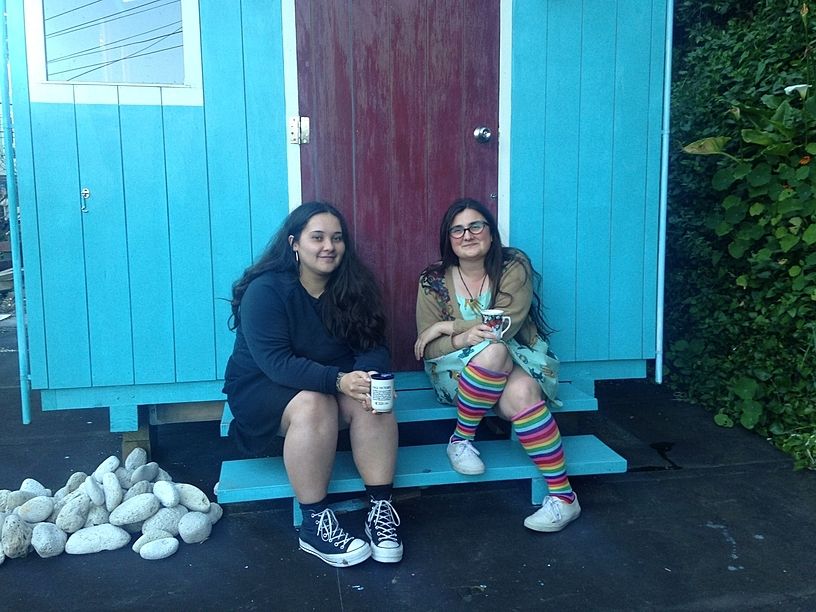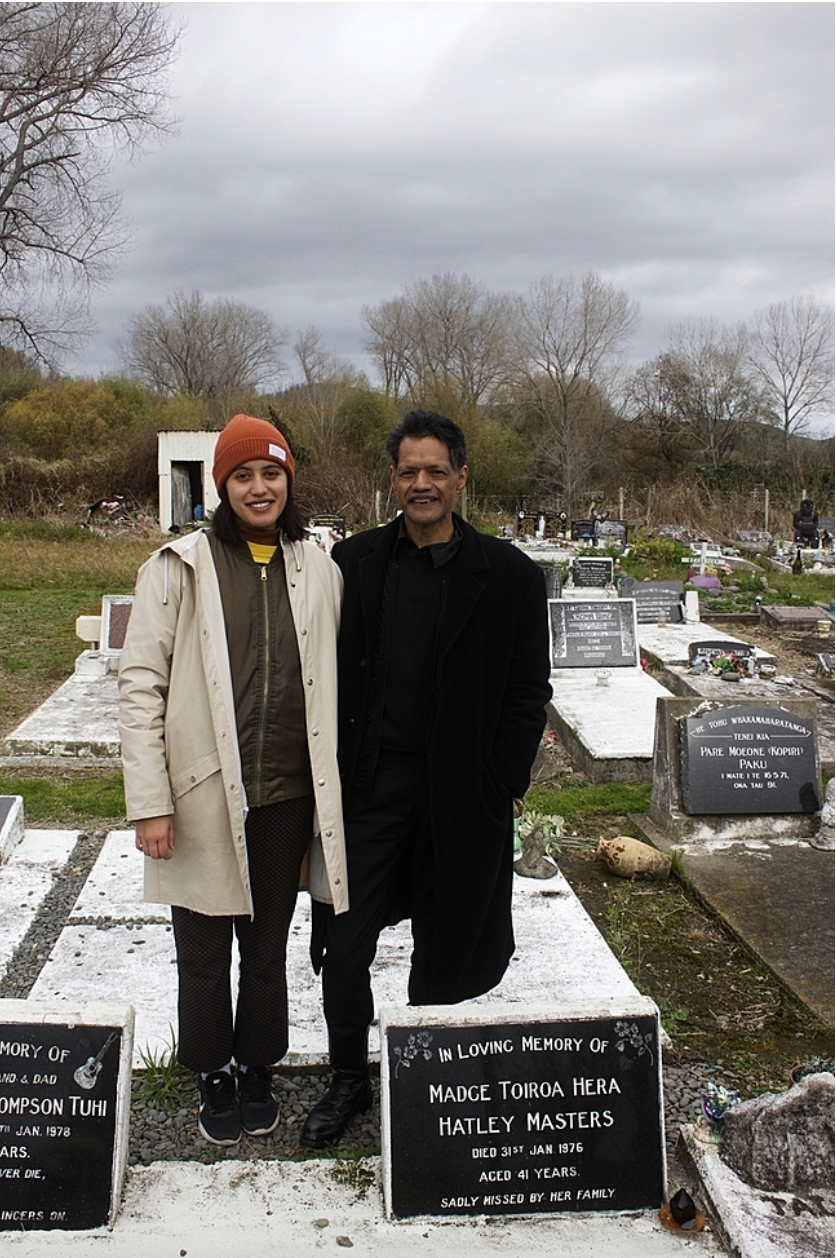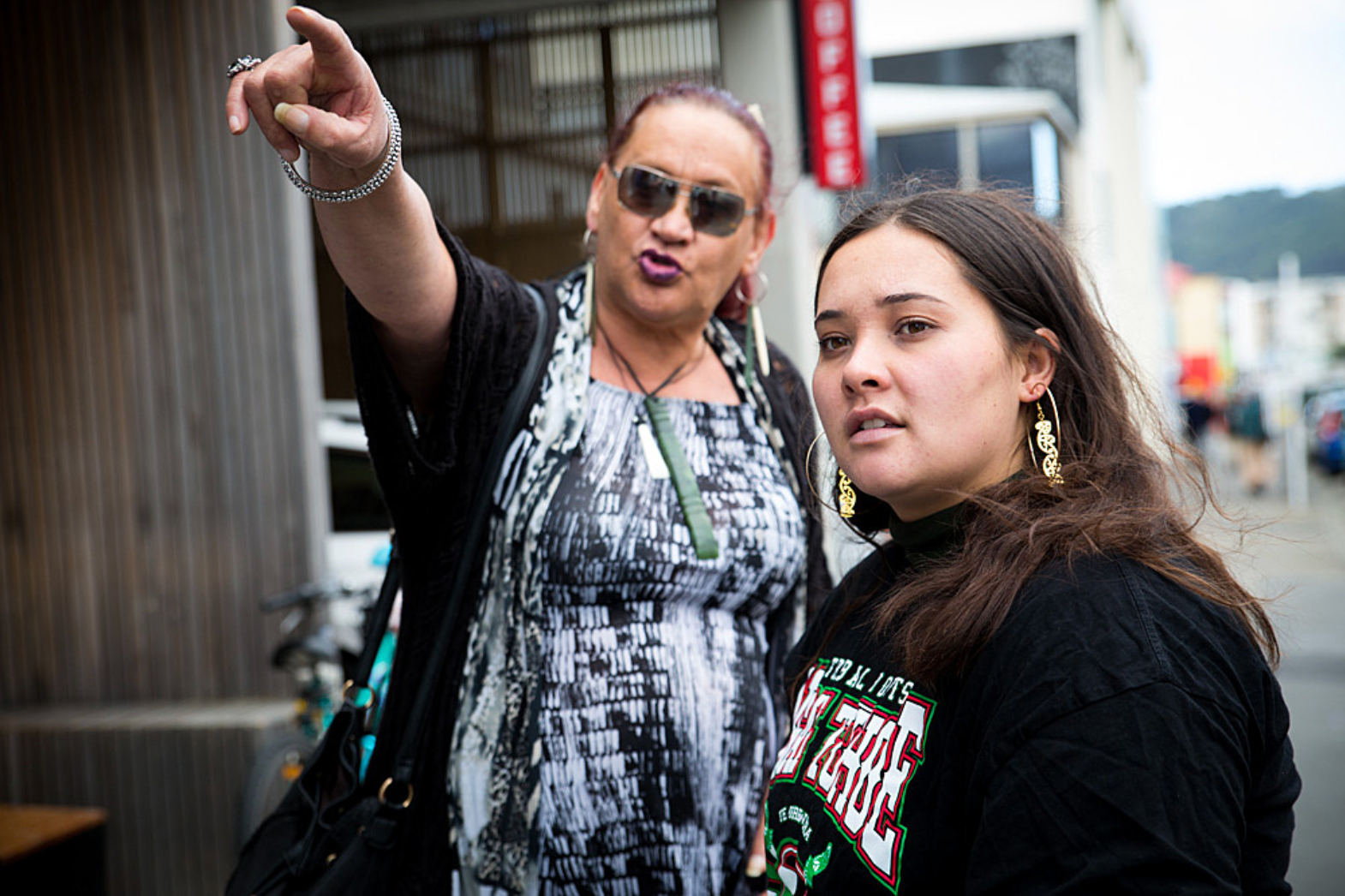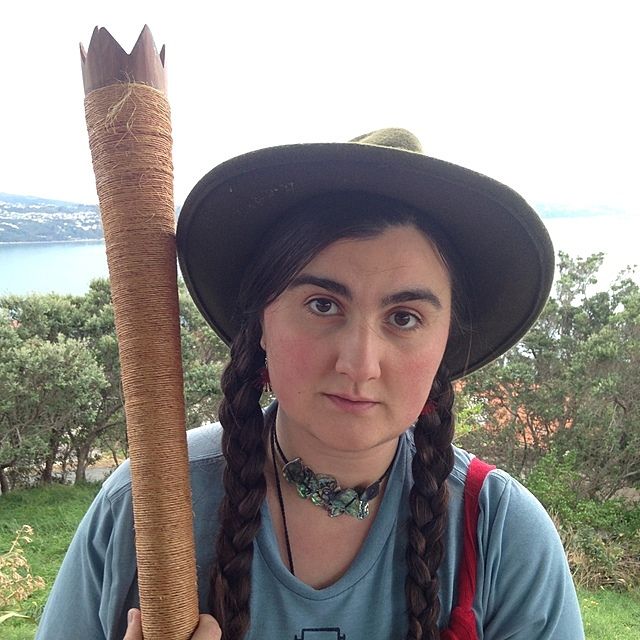A Kaputī with Kahu Kutia
Ruby Solly has a kōrero with Kahu Kutia about her latest Podcast Series He Kākano Ahau.
Ruby Solly has a kōrero with Kahu Kutia about her latest Podcast Series He Kākano Ahau, and what it takes to create media that amplifies Māori stories, with a Māori voice.
In her recently released podcast He Kākano Ahau, Kahu Kutia (Ngāi Tūhoe) partners with urban Māori around the motu to whakamana the stories of kaikōrero. He Kākako Ahau celebrates the diversity and connection of urban Māori not only to their culture but to their communities and each other. Kutia inhabits many spaces as an artist, activist, journalist, and an urban Māori herself. Her own experiences weave together to bring out stories from communities and individuals that are not often seen in the media, and are even less likely to tell stories with their own voices.
He Kākano Ahau spans Aotearoa, from mana whenua in Tāmaki Makaurau tracing their ancestors beneath concrete, to Takatāpui gathering together as whānauka in Te Whanganui-a-Tara. From Māori in Ōtautahi working to improve social work while fighting for visibility, to small-town Aotearoa where a family retraces their whakapapa, Kutia manages to show that there are as many ways to be Māori as there are takata Māori by working to tell the stories of kaikōrero rather than building a story around them. He Kākano Ahau tells wider stories that represent urban Māori through the kaikōrero narratives featured in this intimate and important work. We sat down in my shed to talk about her podcast, the weight of colonisation and decolonisation, and about being young and urban Māori in the city.
Ruby Solly: Firstly, I just wanted to mihi to you for this important mahi you’ve done. In terms of Māori and media, I see a lot of incredible work happening in our communities, especially with rakatahi Māori. Still, a lot of that work isn’t put forth and is often underground. You can really sense this in the Ōtautahi episode, where there’s all this great stuff going on, but it’s not all connected up, and you have to go out and find it. I feel that works of media like He Kākano Ahau bring those things out, and weave together people and events so we get more idea of these things in a canon. As someone who creates media, do you think about this? Is that one of your goals?
Kahu Kutia: As in to put more stories out wider?
RS: Yeah, or to amplify Māori voices, with a Māori voice.
When Pākehā journalists tell stories, they make the kaikōrero feel it’s a privilege to have your story shared. That you’re lucky that your story is getting out there. But we are the lucky ones because they’re willing to share their stories with us
KK: Totally. Thank you for doing this interview. It’s all part of the kaupapa of wanting to get these stories out as widely as possible, and it’s such a privilege and a gift to have the kaikōrero that we had in the series. I feel that when Pākehā journalists tell stories, they make the kaikōrero feel it’s a privilege to have your story shared. That you’re lucky that your story is getting out there. But we are the lucky ones because they’re willing to share their stories with us.
RS: That really comes across in the podcast. I come from a family where Dad’s Māori and Mum’s Pākehā…
KK: Same here!
RS: Right, yeah! When I was in Rotorua, as a teenager, someone said to me at a party, “Everyone here’s Māori apart from my mum.” I love this because it just sums up a whole generation and generations before that as well. I really feel that when my mum is brought into Māori spaces, or when I’m talking to Pākehā about te ao Māori, I speak to them differently… it’s a normal thing to do in the context. What really comes across in this series is that it’s Māori talking to Māori. I imagine that for Pākehā and tauiwi this would be them hearing these stories in the way that we would tell them to each other, as well.
KK: When I make a story, I’m always thinking about a 12-year-old Māori kid in a small town. I’m talking to them. With any story I tell, that’s my intention, I picture this kid in my head. In media about Māori they will refer to us as ‘they’, or if it’s talking about young people they will say ‘they’; and that can have such a huge effect on a person. It’s a way to whakamana any young person who will listen, because there’s very little media that’s been aimed at them before.
That’s something I said when we were working on the podcast. We need to change this language, because I’m not speaking to Pākehā. Barry Barclay has this media theory that has been pretty influential for me, called the ‘Talking In, Talking Out’ approach. He visualises kōrero as if we’re in a wharenui, talking amongst Māori with all our ideas understood in that context. But Pākehā can sit in, and that’s the most productive way to get a good understanding; by sitting with us and listening to our kōrero.
Someone said in relation to a friend’s work, “Māori only ever talk about identity”
RS: You choose to think about the 12-year-old Maori kid in your stories. That’s so interesting. Twelve is an identity-forming age and identity is so crucial in te ao Māori. It really comes through as one of the main threads of this podcast.
KK: Someone said in relation to a friend’s work, “Māori only ever talk about identity.”
RS: What else is there to talk about?
KK: Totally! I’m starting to read Sport 47, edited by Tayi Tibble, and there’s an interesting kōrero between Patricia Grace and Anahera Gildea around what makes a Māori story. I think identity is always going to come out, especially if it’s an urban story, you know, how do we be Māori in this space? Especially for us with Pākehā whakapapa as well, there’s always going to be some kind of wānanga around who we are, and we’re probably going to be having these conversations for a long time.
RS: Yes and in a way that gives us a sense of kotahitanga within these urban spaces despite being uri of different iwi. The podcast has this beautiful feeling of partnership, and there’s a lot of intimate stories that are told here. Especially in the episode where Geneva goes back to her whenua for the first time with her whānau.
To me as a listener, it feels like you are there to whakamana the kaikōrero and support them on that journey. You do this in a way that’s completely free of judgement. Do you feel that your job with this mahi is broader than just being a journalist? Did you feel a duty to support people on these journeys and with letting out their stories?
KK: Yeah, totally. I don’t like the mahi of ‘creating a story’. Again, I’m motivated by that 12-year-old kid. If we tell these stories, we get more people being willing to connect with their culture and more positive outcomes for Māori in general. If somebody hears these stories and that gives them the strength to reconnect, that would be amazing for me. I think as Māori we’re never only one thing. I’ve found that in all mahi and no matter what role we’re doing, we have an obligation to our people. While recording that episode, It was a privilege to be there as a journalist, making a podcast of her connecting to the place where she’s from for the first time. Thousands of people have heard her talk about it now!
RS: The energy in that recording… it’s palpable. The tension of the journey and the release when she recited her pepeha at the end. I couldn’t stop the tears, not only for Geneva and her whānau, but for some of my whānau too, and the whānau of others as well within what is really a modern diaspora.
KK: Its heart wrenching, right? We could never have predicted the fullness of the stories that these people would bring. When we asked Geneva to go back she was so keen and got her dad involved. Then he’s telling us about his childhood and being taken away from his whānau, his time in government boys’ homes and the effect it had on his life. I think it’s such a strong narrative, and especially relevant right now with a lot of discourse happening around the uplift of Māori babies. I think Geneva and Daniel wrap up the kaupapa really well.
What I really wanted was five empowering stories, while telling that urban Māori narrative of how these people were taken away or forced to leave. These stories are the consequences of urban and stolen generations.
RS: In te ao Māori there’s this beautiful circular nature of things, and I feel that this year it’s been so present in our world in both beautiful and tragic ways. In the podcast we see this notion of history repeating, with the rebuild of Tapu Te Ranga, Ihumātao echoing Bastion Point, and the different generations of our Takatāpui whānauka moving to the cities. When you were creating the series did you feel this?
You say you would have been at Bastion Point? Now you need to be at Ihumātao. You would have loved to be at the build of Tapu Te Ranga? Now you get that opportunity
KK: Yes. As we went through the recording, we had to go back to all these places after to follow up because a lot started happening, like with Tapu Te Ranga and Ihumātao. In the fourth episode, Hana said to me; it really feels like all these events that we’ve really admired, suddenly we’re getting the opportunity to redo them. Suddenly we’re getting called out.
You say you would have been at Bastion Point? Now you need to be at Ihumātao. You would have loved to be at the build of Tapu Te Ranga? Now you get that opportunity.
The universe is putting out a tono, we’ve admired this history, now we need to go out and do it ourselves. Which is one of the coolest things I’ve heard all year, and as I learn more about our history, the more I realise I don’t know, and the more I understand that so much has already been done for us. This is an opportunity to do what our tuakana, what our pākeke did and take it in our own direction as well.
RS: Tautoko. We’re sitting at an important time in our history. If you could go back, what would you say to 12-year-old Māori you?
KK: I would want to have a real good sit-down conversation with her, and talk about how she sees the world. Even now I’m still unlearning some of the assumptions I had about growing up, you know? I would want to work with her to really find out what our worldview was. To instil some of those ideas, and to help her be willing to interact with her culture.
To this day I struggle to be an authentic person. I mirror who I’m with, and wish that I could tell her at an early age that you can be all these things and still be Māori, and also be a person who comes from England, Denmark and Scotland. I’d tell her that the biggest power you have is the power to tell your own narrative.
I think that’s relevant as well to Pākehā fragility. A lot of those issues come from not being able to tell their narratives. I see my Pākehā grandmother as an ideal example. She knows our Scottish whakapapa 18 generations back, and she’s made trips back to Scotland to visit those places where her great-grandparents were born. Because of that she knows who she is and so the idea of me, being her grandchild and expressing myself through my Māoriness, makes sense to her because she has a similar pride for her culture.
This is hard in Aotearoa if you have whānau who have been here for eight generations and don’t quite know what fits. But I think the ability to tell our stories is key to who we can be as a collective, and who we can be as ourselves.
He Kākano Ahau was produced by Ursula Grace Productions for RNZ and was supported by the RNZ/NZ On Air Innovation Fund.



